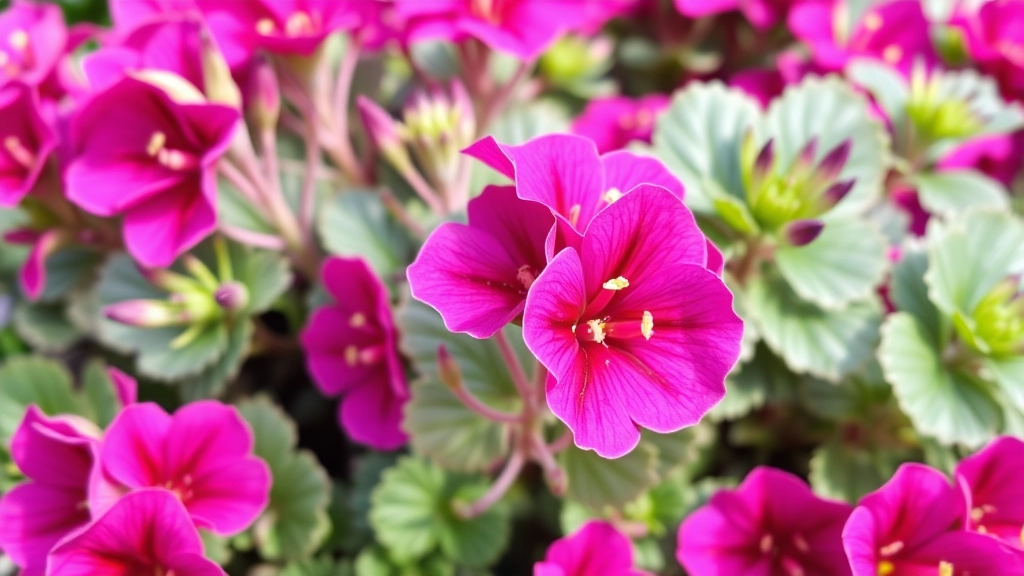Florist Kalanchoe Purple: A Captivating Succulent
Are you curious about the captivating Florist Kalanchoe Purple? This vibrant succulent is a favourite among plant enthusiasts for its stunning purple blooms and easy care. In this guide, I’ll walk you through everything you need to know about this beautiful plant, from its unique characteristics to the best growing conditions and maintenance tips.
Whether you’re a seasoned gardener or a beginner, understanding the specific needs of the Florist Kalanchoe Purple can help you achieve a thriving and blooming plant. Let’s dive into the essentials of watering, light, temperature, soil mix, and more to ensure your Kalanchoe flourishes year-round.
Characteristics of Purple Florist Kalanchoe
When considering the vibrant world of indoor plants, you might wonder what sets the Purple Florist Kalanchoe apart from others.
This stunning succulent is cherished for its rich, deep purple blooms and fleshy, rounded leaves.
Key Characteristics:
- Blooms: The flowers are small, clustered, and can last for weeks, making them a popular choice for indoor décor.
- Leaves: Thick, glossy, and dark green, providing a beautiful contrast to the vibrant flowers.
- Growth Habit: Typically grows upright, reaching heights of around 30-45 cm (12-18 inches), making it suitable for various spaces.
- Lifespan: With proper care, Kalanchoe can thrive for several years, bringing joy and colour to your home. For tips on maximizing its longevity, check out our Kalanchoe lifespan care tips.
The Purple Florist Kalanchoe is not just visually appealing; it’s also relatively low-maintenance, making it a favourite among both novice and seasoned plant enthusiasts. To ensure your plant thrives, visit our complete care guide for florist Kalanchoe.
Best Growing Conditions for Purple Kalanchoe
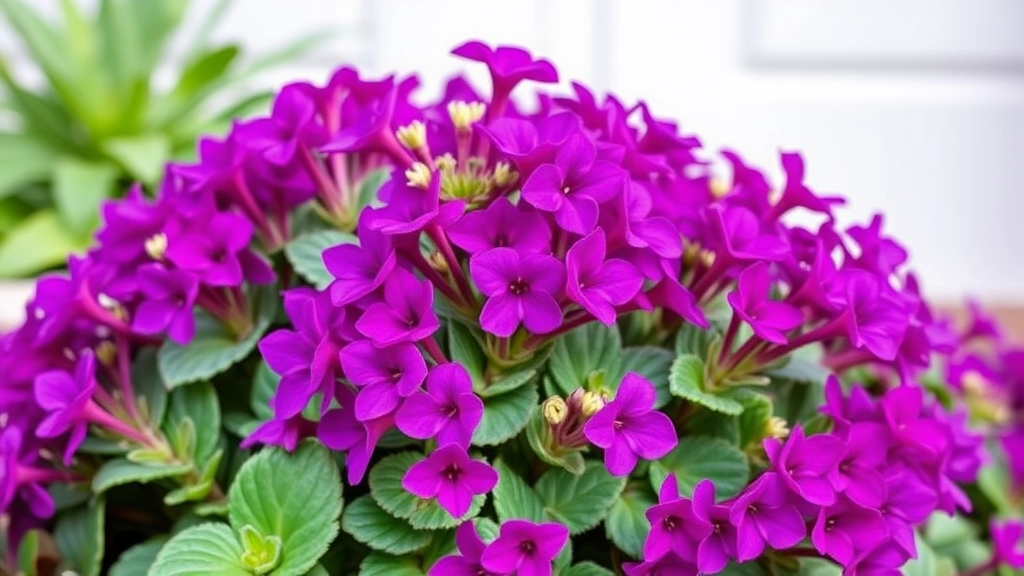
So, you’ve got your eye on that stunning Purple Kalanchoe, but what do you really need to know about its ideal growing conditions?
First off, these beauties thrive in a warm and stable environment.
Here’s what you should keep in mind:
- Temperature: Aim for a sweet spot between 18°C to 24°C (65°F to 75°F). They don’t fancy the cold, so keep them away from chilly drafts.
- Humidity: Moderate humidity is key. If your home is too dry, consider placing a humidifier nearby or misting the leaves occasionally.
- Air Circulation: Good airflow is essential. This helps prevent mold and keeps your plant healthy.
- Pot Size: A pot that’s too big can hold excess moisture, which Kalanchoe doesn’t like. Stick to a pot that’s just a tad larger than the root ball.
- Fertilization: During the growing season (spring and summer), a balanced liquid fertilizer every few weeks will keep your Kalanchoe happy and thriving.
### Watering Requirements for Florist Kalanchoe
When it comes to caring for your Purple Florist Kalanchoe, watering is one of the most crucial aspects to get right. Overwatering can lead to root rot, while underwatering can cause your plant to wilt.
#### Understanding Your Plant’s Needs
– **Frequency**: Water your Kalanchoe every 2-3 weeks, allowing the soil to dry out completely between waterings.
– **Signs of Underwatering**: If the leaves start to shrivel or become limp, it’s time to give your plant a drink.
– **Signs of Overwatering**: Yellowing leaves or a mushy stem are red flags that you may be watering too much.
#### Watering Technique
– **Soil Check**: Always check the top inch of soil before watering. If it’s dry, it’s time to water.
– **Watering Method**: Use room temperature water, pouring it directly onto the soil rather than the leaves to prevent fungal issues.
– **Drainage**: Ensure that your pot has drainage holes to allow excess water to escape.
#### Seasonal Adjustments
– **Summer**: During the growing season, you may need to water more frequently due to increased evaporation.
– **Winter**: Cut back on watering as the plant enters dormancy, allowing the soil to dry out more thoroughly.
For more detailed care tips, you can check out our [complete guide for Kalanchoe Pink Butterflies](https://planthq.org/complete-guide-to-growing-and-caring-for-kalanchoe-pink-butterflies/) and learn how to [propagate Kalanchoe Blossfeldiana cuttings](https://planthq.org/how-to-propagate-kalanchoe-blossfeldiana-cuttings/).
Light and Temperature Needs
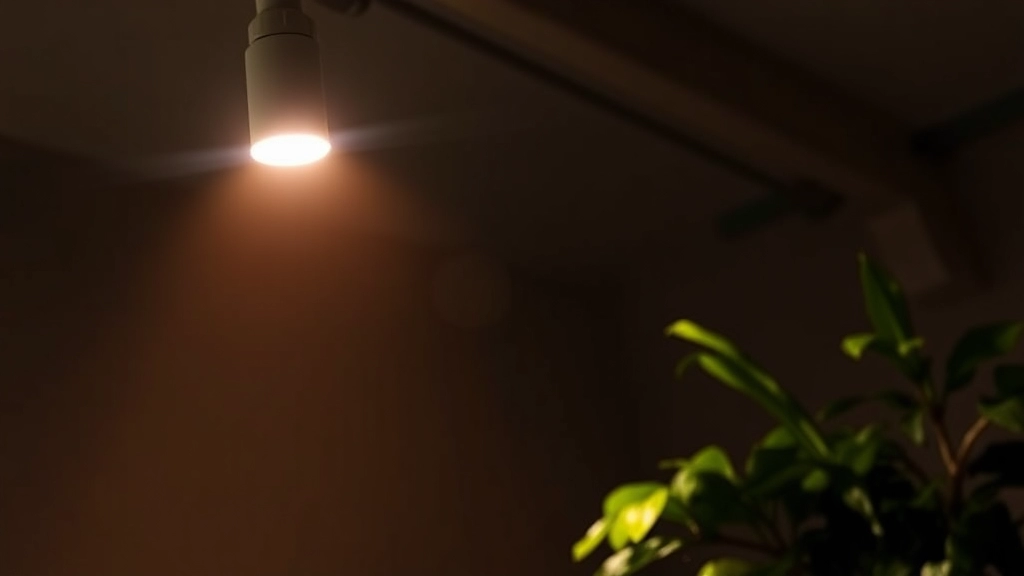
When it comes to caring for your Purple Florist Kalanchoe, understanding its light and temperature requirements is crucial. Many plant lovers often wonder, “How much light does my Kalanchoe need?” or “What temperature is ideal for its growth?”
Light Requirements
Purple Kalanchoe thrives in bright, indirect sunlight. Here are some key points to consider:
- Direct Sunlight: While it can handle some direct sunlight, too much can scorch the leaves.
- Ideal Location: A south or west-facing window is perfect for providing the right amount of light.
- Supplemental Lighting: If natural light is limited, consider using grow lights to maintain vibrant growth.
Temperature Needs
Temperature plays a significant role in the health of your Kalanchoe. Here are the essentials:
- Optimal Range: Aim for temperatures between 18°C to 24°C (65°F to 75°F).
- Avoid Extremes: Keep your plant away from drafts, heaters, or air conditioning vents.
- Winter Care: If your Kalanchoe is outdoors during warmer months, bring it inside when temperatures drop below 10°C (50°F).
Soil Mix and Drainage Essentials
When it comes to growing Purple Florist Kalanchoe, the right soil mix and drainage are crucial for ensuring healthy growth and vibrant blooms. Many enthusiasts often worry about the best soil composition for their plants.
Ideal Soil Mix
For optimal growth, consider using a well-draining soil mix. Here are some key components to include:
- Cactus Mix: A pre-made cactus or succulent mix is a fantastic option, as it offers excellent drainage.
- Perlite or Pumice: Adding these materials can enhance aeration and drainage. Aim for a mix that consists of about 50% potting soil and 50% perlite or pumice.
- Organic Matter: Incorporating a small amount of organic matter, like compost, can provide essential nutrients without retaining too much moisture.
Drainage Essentials
Proper drainage is just as vital as the soil mix. Here are some tips to ensure your Kalanchoe thrives:
- Pot Selection: Choose pots with drainage holes to prevent water from pooling at the bottom.
- Layering: Consider adding a layer of gravel or small stones at the bottom of the pot. This will further improve drainage and prevent root rot.
- Repotting: If you notice water sitting on the surface after watering, it may be time to repot your plant with fresh soil.
For more detailed care instructions, you might find our Blooming Succulent Kalanchoe Care Guide helpful.
How to Encourage Blooms in Kalanchoe
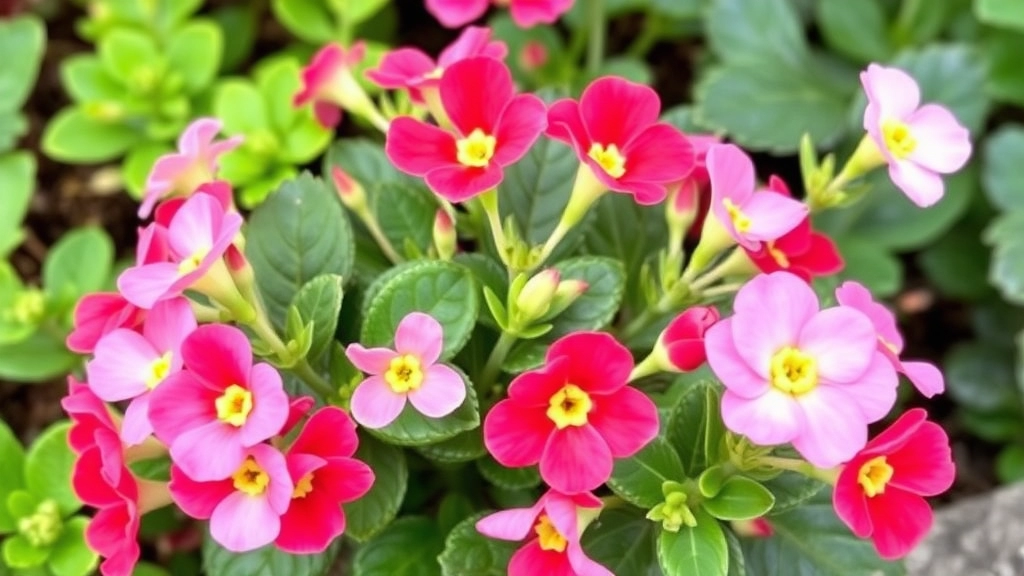
Are you wondering why your Kalanchoe isn’t blooming like it should?
Getting those vibrant purple flowers to pop isn’t as tricky as it might seem. With a few simple tips, you can coax your Florist Kalanchoe into a blooming spectacle. Let’s dive into what you can do to encourage those beautiful blossoms.
Key Tips to Boost Blooms
- Light Exposure: Ensure your Kalanchoe gets plenty of bright, indirect sunlight. Too little light can stunt blooming. Aim for about 6 hours a day.
- Temperature Control: Keep the temperature between 20°C to 25°C (68°F to 77°F) during the day. Nights can be a bit cooler, but avoid anything below 10°C (50°F).
- Fertilising: Use a balanced, water-soluble fertiliser every few weeks during the growing season. This helps boost energy for blooming. Look for one with a higher phosphorus content.
- Pruning: After flowering, trim back spent blooms and any leggy growth. This encourages new growth and more blooms next season.
- Watering Schedule: Keep the soil slightly dry between waterings. Overwatering can lead to root rot, which can stop blooming altogether.
- Dormancy Period: Allow your Kalanchoe to rest after its blooming period. Dropping water and fertiliser during this time can help it conserve energy for the next round of blooms.
By following these tips, you’ll be well on your way to a flourishing Kalanchoe.
As we delve deeper into caring for your Purple Florist Kalanchoe, it’s vital to consider the importance of pruning and maintenance. Proper care not only enhances the plant’s beauty but also promotes healthy growth.
### Why Pruning Matters
Pruning is essential for maintaining the shape and health of your Kalanchoe. It encourages new growth and can help prevent overcrowding, which can lead to diseases.
### When to Prune
– **Post-Blooming**: The best time to prune is after the flowering period. This allows the plant to focus its energy on new growth.
– **Regular Maintenance**: Check your plant every few weeks for dead or yellowing leaves that can be removed at any time.
### How to Prune
1. **Use Clean Tools**: Always use sharp, clean scissors or pruning shears to avoid introducing diseases.
2. **Cut Above a Node**: Make cuts just above a leaf node to encourage new growth.
3. **Remove Dead Leaves**: Snip away any dead or wilted leaves to keep the plant healthy.
### Maintenance Tips
– **Fertilization**: Feed your Kalanchoe with a balanced fertiliser during the growing season to promote vibrant blooms.
– **Dusting Leaves**: Regularly wipe the leaves with a damp cloth to remove dust, allowing the plant to photosynthesize effectively.
– **Monitor Growth**: Keep an eye on the overall shape of your plant and adjust your pruning accordingly.
For more detailed instructions on maintaining your Kalanchoe, you can refer to this [complete care guide](https://planthq.org/caring-for-your-kalanchoe-succulent-a-complete-guide/). Additionally, if you notice any issues with your plant, such as drooping leaves, you might find this [guide on fixing drooping Kalanchoe leaves](https://planthq.org/how-to-fix-drooping-kalanchoe-leaves-causes-and-solutions/) helpful.
Common Pests and Diseases to Watch For
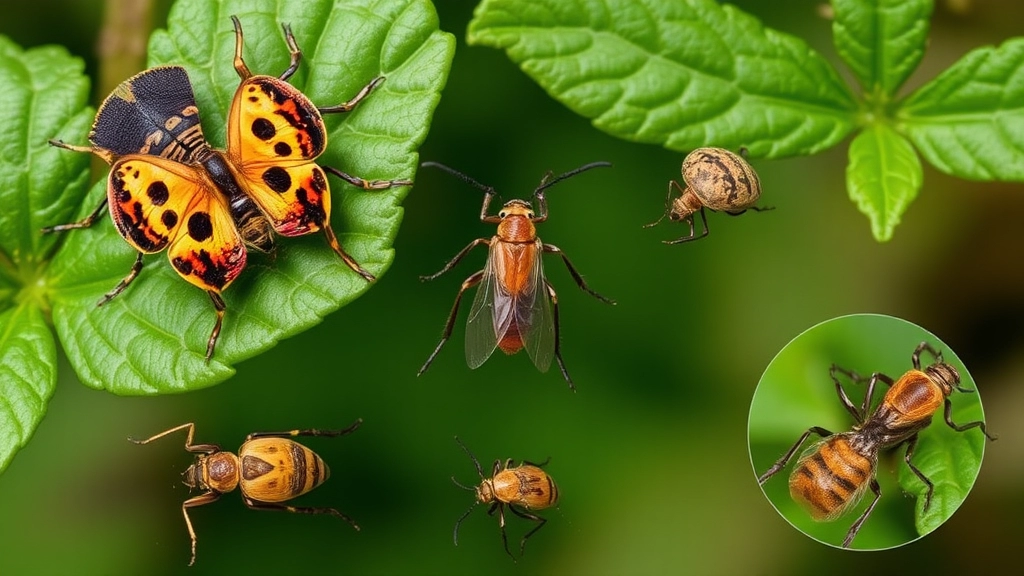
So, you’ve got your Purple Florist Kalanchoe thriving, but what happens when those pesky pests and diseases come knocking?
Pests to Keep an Eye On:
- Mealybugs: These little white fluff balls love to hide in the leaf joints. They suck the sap, leaving your plant weak.
- Aphids: Tiny and green, these guys can multiply quickly. They also suck sap and can cause leaves to curl.
- Spider Mites: If you notice fine webbing on your plant, it’s likely spider mites. They thrive in dry conditions and can be a real nuisance.
Diseases to Watch For:
- Root Rot: Overwatering is the main culprit here. If your plant’s leaves are yellowing and mushy, it might be time to check the roots.
- Powdery Mildew: This white, powdery substance can appear on leaves, especially in humid conditions. It’s not pretty and can hinder growth.
How to Combat These Issues:
- Regular Inspections: Check your Kalanchoe weekly for any signs of pests or disease.
- Neem Oil Treatment: A natural pesticide that works wonders. Spray it on affected areas to keep pests at bay.
- Good Air Circulation: Ensure your plant isn’t cramped. A little space goes a long way in preventing issues.
Keeping your Purple Kalanchoe healthy is all about being proactive.
Propagation Methods for Kalanchoe
If you’ve enjoyed nurturing your Purple Florist Kalanchoe, you might be wondering how to propagate this vibrant plant to expand your collection or share with friends. Propagation can be a rewarding experience, allowing you to create new plants from cuttings or leaves.
Ideal Uses of Florist Kalanchoe in Decor

So, you’ve got your stunning Purple Florist Kalanchoe and you’re wondering how to showcase it? You’re not alone! Many folks are looking to add a splash of colour to their spaces without going overboard.
Versatile Decor Options
Here are some fab ways to use your Kalanchoe in your home or office:
- Table Centerpieces: Place a vibrant Kalanchoe in a decorative pot on your dining or coffee table. It instantly becomes a conversation starter.
- Window Sills: These beauties love the light! A row of Kalanchoe on your window sill can brighten up any room.
- Shelf Displays: Mix and match with other plants or decorative items. A single Kalanchoe can add that pop of colour to your shelves.
- Gift Ideas: Kalanchoe makes for a lovely gift. Pair it with a nice pot and a card for a thoughtful present.
- Event Decor: Whether it’s a wedding or a birthday bash, these plants can be used as centrepieces or accents. They add a touch of elegance without the fuss.
Seasonal Touches
During different seasons, you can switch up the decor. In spring, pair it with pastel colours; in autumn, consider earthy tones. This keeps your space feeling fresh and inviting.
Personal Touches
Don’t hesitate to get creative! You could paint pots to match your room or arrange them in unique ways.
Kalanchoe is not just about beauty; it’s about personal expression.
Differences Between Varieties of Purple Kalanchoe
As we explore the fascinating world of Purple Kalanchoe, it’s essential to understand the various varieties available. Each type offers unique traits that can influence your choice, whether for personal enjoyment or decorative purposes.
Key Varieties of Purple Kalanchoe
-
Kalanchoe blossfeldiana
- Description: Often referred to as the florist’s Kalanchoe, this variety is known for its vibrant purple blooms.
- Features: Compact growth, thick leaves, and a long blooming period.
- Best for: Indoor settings due to its manageable size.
-
Kalanchoe luciae
- Description: Commonly known as the paddle plant, it showcases a more subtle purple hue.
- Features: Larger, paddle-shaped leaves that can turn a beautiful shade of purple under bright light.
- Best for: Outdoor gardens or succulent collections.
-
Kalanchoe tomentosa
- Description: Known as the panda plant, this variety has a unique silvery-green foliage with purple edges.
- Features: Fuzzy leaves that add texture and interest.
- Best for: Indoor displays and as a conversation starter.
-
Kalanchoe ‘Purple Butterflies’
- Description: A hybrid variety that produces striking purple flowers resembling butterflies.
- Features: Unique flower shape and vibrant colour.
- Best for: Eye-catching arrangements and centrepieces.
Choosing the Right Variety
When selecting a Purple Kalanchoe, consider the following:
- Growing Space: Some varieties are better suited for small spaces, while others thrive in larger outdoor settings.
- Light Requirements: Different types have varying light needs, so ensure you choose one that fits your environment.
- Personal Preference: Whether you prefer compact blooms or larger foliage, there’s a variety for everyone.
Understanding these differences can help you make informed decisions, ensuring your Kalanchoe thrives in its new home. For more details on how to grow and care for Kalanchoe ‘Purple Butterflies’, check out our comprehensive guide. Additionally, if you’re interested in the unique features of the panda plant, don’t miss our detailed care guide.
Seasonal Care for Indoor and Outdoor Growth
So, you’ve got your Purple Florist Kalanchoe and you’re wondering how to keep it thriving through the seasons?
Indoor Care
Winter:
- Keep it cool, around 15-20°C.
- Reduce watering; let the soil dry out a bit between drinks.
- Provide bright, indirect light.
Spring:
- Time to wake it up! Increase watering as it starts to grow.
- Fertilize every few weeks with a balanced plant food.
- Ensure it gets plenty of light to encourage new growth.
Summer:
- If it’s warm, consider moving it outside for some fresh air.
- Keep an eye on watering; it might need more during hot spells.
- Ensure it’s in a spot where it can soak up the sun.
Autumn:
- Start reducing watering as the plant slows down.
- Prune any dead leaves or spent blooms to keep it tidy.
- Prepare for cooler temperatures; bring it indoors if needed.
Outdoor Care
Winter:
- Protect from frost; if it’s too cold, bring it inside.
- Water sparingly; the plant goes dormant.
Spring:
- Reintroduce it to the outdoors gradually.
- Refresh the soil if it’s been in the same pot for a while.
Summer:
- Ensure it’s in a location with good drainage.
- Watch for pests; they can be more active in warmer months.
Autumn:
- As temperatures drop, start moving your Kalanchoe back indoors.
- Cut back on watering; let it adjust to the change.
FAQs About Florist Kalanchoe Purple
What are the best growing conditions for Purple Kalanchoe?
These plants thrive in a warm and stable environment. Aim for temperatures between 18°C to 24°C (65°F to 75°F), maintain moderate humidity, ensure good air circulation, use a pot slightly larger than the root ball, and fertilize with a balanced liquid fertilizer during the growing season.
How much light does a Purple Kalanchoe need?
Purple Kalanchoe thrives in bright, indirect sunlight. It can handle some direct sunlight, but too much can scorch the leaves. A south or west-facing window is ideal, and if natural light is limited, consider using grow lights.
What temperature is ideal for Purple Kalanchoe growth?
The optimal temperature range is between 18°C to 24°C (65°F to 75°F). Avoid exposing the plant to drafts, heaters, or air conditioning vents. If the plant is outdoors during warmer months, bring it inside when temperatures drop below 10°C (50°F).
How can I encourage my Kalanchoe to bloom?
Ensure your Kalanchoe gets plenty of bright, indirect sunlight (about 6 hours a day), maintain temperatures between 20°C to 25°C (68°F to 77°F) during the day, use a balanced, water-soluble fertilizer with higher phosphorus content, prune after flowering, keep the soil slightly dry between waterings, and allow the plant to rest after its blooming period.
What common pests and diseases should I watch for in my Purple Kalanchoe?
Be on the lookout for pests like mealybugs, aphids, and spider mites. Common diseases include root rot and powdery mildew. Regularly inspect your plant, use neem oil as a natural pesticide, and ensure good air circulation to combat these issues.
How can I use Florist Kalanchoe in home or office decor?
Florist Kalanchoe can be used as table centerpieces, on window sills, in shelf displays, as gifts, and for event decor. You can switch up the decor seasonally and add personal touches like painting pots or arranging them creatively.
Why is my Kalanchoe not blooming?
Your Kalanchoe might not be blooming due to insufficient light, improper temperature, lack of nutrients, or improper watering. Ensure it gets enough bright, indirect sunlight, maintain the optimal temperature range, fertilize during the growing season, and avoid overwatering.
What should I do if I notice pests on my Kalanchoe?
Inspect your plant weekly for signs of pests. Use neem oil to treat affected areas and ensure good air circulation to prevent infestations.
Can I keep my Kalanchoe outdoors?
You can keep your Kalanchoe outdoors during warmer months, but bring it inside when temperatures drop below 10°C (50°F) to prevent damage from the cold.
How often should I water my Kalanchoe?
Keep the soil slightly dry between waterings. Overwatering can lead to root rot, so it’s better to err on the side of underwatering.
References
-
Guide to Growing Kalanchoe
-
Growing Kalanchoe Indoors
-
Kalanchoe: How to Grow and Care for Kalanchoe Plants
